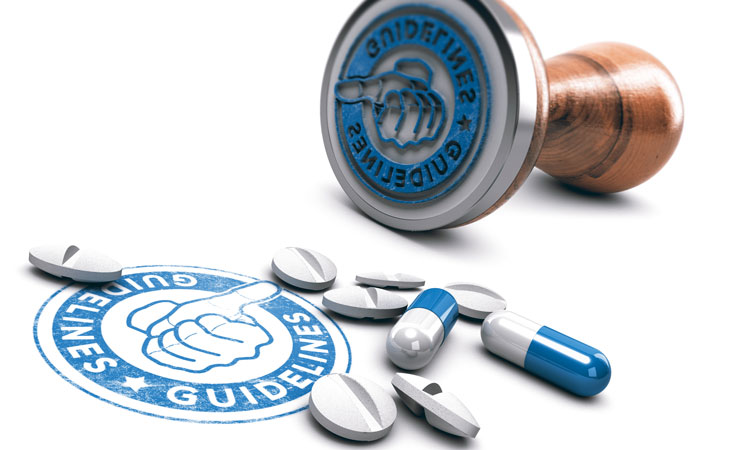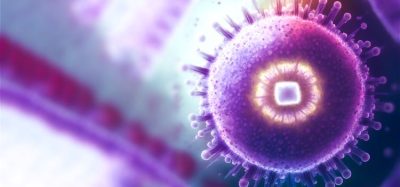Validation of analytical procedures – ICH Q2(R2)
Posted: 18 March 2024 | Dave Elder (JPAG Member and David P Elder Consultancy) | No comments yet
The recently updated ICH Q2(R2) guidance marks a significant milestone in analytical procedure validation. Dave Elder explains why.


After almost two decades, ICH Q21 (validation of analytical procedures) has finally been updated and now includes more recent analytical applications, which are non‑chromatographic in nature, eg, nuclear magnetic resonance (NMR) spectroscopy, inductively coupled plasma mass spectrometry (ICP-MS), etc, and aligns with the new guidance on the development of analytical procedures (ICH Q14).2 ICH Q14 will be covered in the next issue.
Many validation strategies for non-chromatographic methods have been proposed over the years; a non‑comprehensive list includes near infra-red (NIR) spectroscopy,3 particle size analysis,4 dissolution5 and X-ray powder diffraction6 for analysis of biological products.7 There have also been many calls for the update of ICH Q2 to include non-chromatographic methods.8
The new guidance highlights that partial validation or re-validation of analytical methods as a result of change control, or method-transfer, may be required. In the latter case, co-validation may be appropriate to demonstrate that the method meets “pre-defined performance criteria by using data generated at multiple sites”. Multivariate analytical procedures, eg NIR, will typically require calibration, internal testing and validation. This is usually a two-stage process whereby the initial phase consists of method development, creating a calibration model and optimisation of the model using reference data and partial least squares (PLS) optimisation – or similar. Finally, using independent samples, the method is validated.
The guidance further defines specificity and selectivity and highlights that in cases where specificity is challenging, eg, for proteins, peptides and oligonucleotides, a second orthogonal method should be used, ideally a different separation technique such as hydrophilic interaction chromatography (HILIC).9 For techniques that do not use separation technologies, eg, bioassays, enzyme-linked immunosorbent assay (ELISA), quantitative polymerase chain reaction (qPCR), specificity can be assured by using reference materials that are suitably characterised and confirm lack of interference with respect to the analyte. If reference standards for specified impurities are not available, then “specificity can be demonstrated by comparing the test results of samples containing typical impurities using an orthogonal technique”.
Range is sub-divided into the reportable and working range. Although the two concepts can be the same, the former covers the lowest to the highest reportable results for which there are appropriate accuracy and precision data. The working range, however, covers the lowest and the highest concentrations for which the method generates meaningful data; the working range may be dissimilar immediately prior to sample preparation (sample working range) and/or when read by the analytical instrument (instrument working range). Mathematical processing is typically needed to produce reportable data.10 The new guidance considers the thorny issue of non-linear response of the analyte with concentration, eg, immunoassays (ELISA) often generate S-shaped response curves and these methods require four- or five-parameter logistic functions. Other techniques, eg, NIR, may require multivariate calibration. The guidance highlights that some of the factors that need to be understood for intermediate precision are variance caused by different days, analysts, equipment and environmental conditions, as identified by a pertinent risk assessment, whereas reproducibility is required for inter‑laboratory assessments.
The updated ICH Q2(R2) guidance gives much more specific requirements for robustness of the different methods and other important analytical considerations, covered in Tables 3-11 of the guideline.
In conclusion, the update to ICH Q2 has been worth the wait and guidance is provided for a slew of different analytical techniques not covered in the 2005 guidance.
Dave Elder, PhD
Dave has worked in the pharmaceutical industry for 45 years for GSK, Syntex and Sterling. He is currently a CMC consultant with an interest in impurities and safety‑based limits. Dave is a member of the British Pharmacopoeia Expert Advisory Group, PCN (Pharmacy and Nomenclature) and a former member of RSC’s Analytical Division Council and JPAG (Joint Pharmaceutical Analysis Group).
References
1. ICH Q2(R2). Validation of analytical procedures. Final Version Adopted on 1 November 2023.
2. ICH Q14. Analytical procedure development. Final Version Adopted on 1 November 2023.
3. De Bleye C, Chavez P-F, Mantanus J, et al. Critical review of near-infrared spectroscopic validation in pharmaceutical applications. J Pharm Biomed Anal. 2012; 69: 125-132.
4. Snorek SM, Bauer JF, Chidambaram N, et al. PQRI Recommendations on Particle‑Size Analysis of Drug Substances Used in Oral Dosage forms. J Pharm Sci. 2007; 96(6): 1451-1467.
5. Mirza T, Liu QJ, Vivilecchia R, Joshi Y. Comprehensive Validation Scheme for In Situ Fiber Optics Dissolution Method for Pharmaceutical Drug Product Testing. J Pharm Sci. 2009; 98(3): 1086-1094.
6. Okumura T, Otsuka M. A Novel Standard Sample Powder Preparation Method for Quantitative Analysis of Polymorphs. J Pharm Sci. 2005; 94(5): 1013-1023.
7. Gabrielson JP, Kendrick BS, Young JA. Universal Qualification of Analytical Procedures for Characterization and Control of Biologics. J Pharm Sci. 2020; 109(8): 2413-2425.
8. Borman P, Elder DP, et al. ICH Quality Guidelines: An Implementation Guide, 127-166. Wiley. [Internet] 2017. [cited 2024Jan] Available from: https://www.wiley.com/en-gb/ICH+Quality+Guidelines%3A+An+Implementation+
Guide-p-9781118971116
9. Wang X, Li W, Rasmussen HT. Orthogonal method development using hydrophilic interaction chromatography and reversed-phase high-performance liquid chromatography for the determination of pharmaceuticals and impurities. J Chromatogr A. 2005 Aug 12;1083(1-2):58-62.
10. Cauchon N, Pelletier MB. Overview of ICH Q2(R2)/Q14: Development and Validation of Analytical Procedures. [Internet] 2023. [cited 2024Jan] Available from: https://www.casss.org/docs/default-source/consultants’-network/2023/cauchon-nina-amgen-inc.-and-pelletier-mary-beth-biogen-2023.pdf?sfvrsn=aba028c1_5









